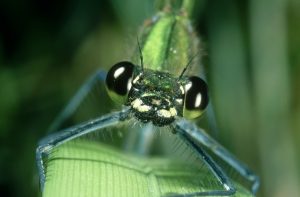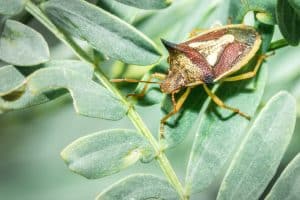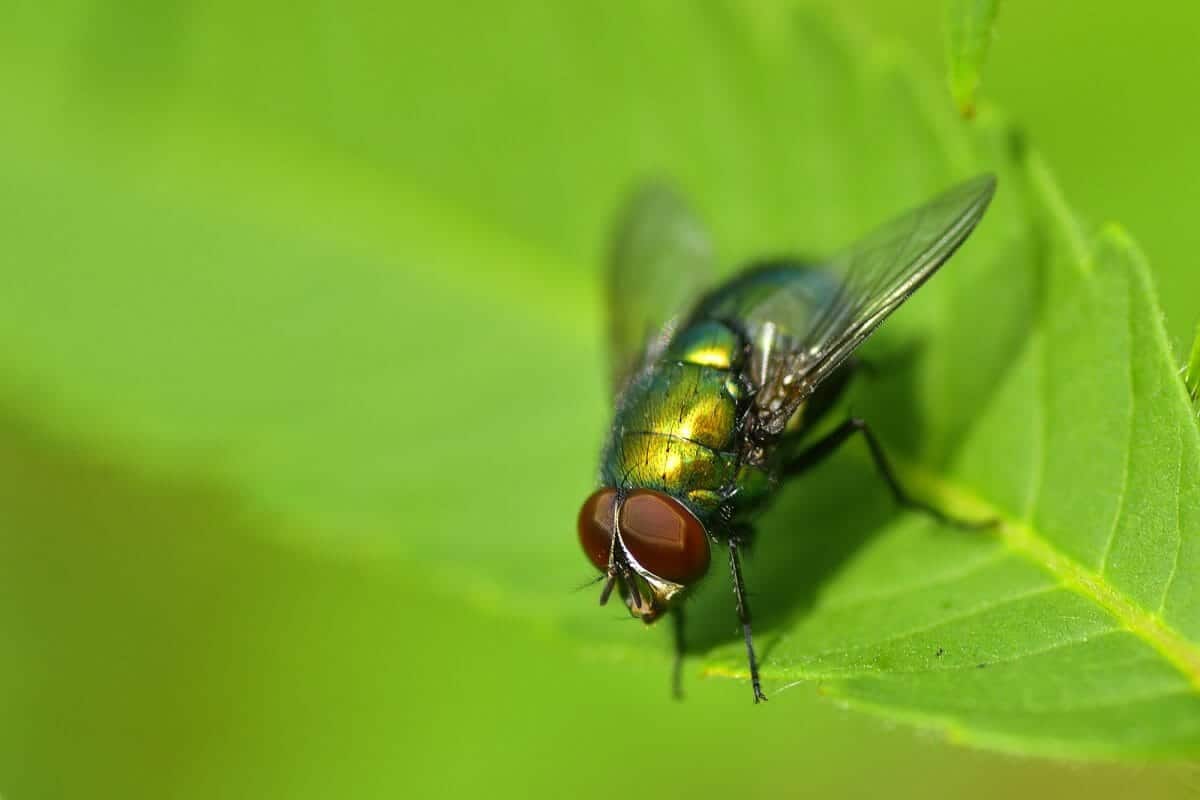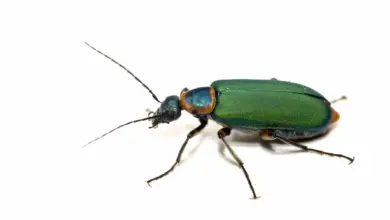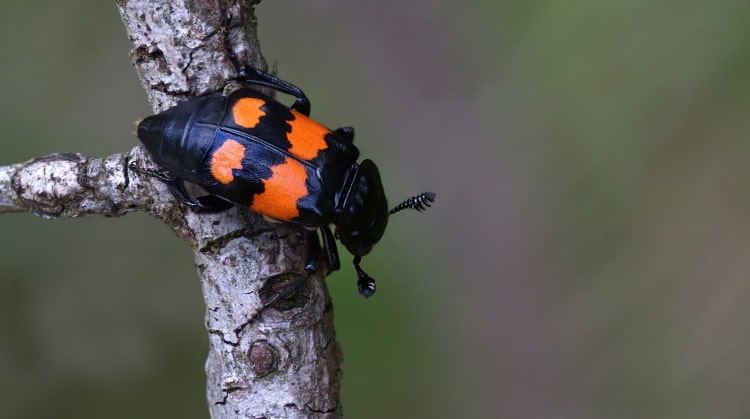31 Helpful Bugs In The Garden
Most gardeners are familiar with the destructive bugs like the aphids, spider mites, and cabbage loopers that chew up our plants. But there are many insects and spiders that are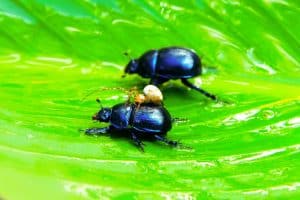
These predaceous creatures eat garden pests and help control their populations naturally. Here are 30 fantastic beneficial bugs that every gardener should know about.
1. Ladybugs
Ladybugs, more properly called ladybird beetles, are definitely a gardener’s best friend. There are nearly 450 species of ladybugs in North America. They come in a variety of colors besides the familiar red with black spots, including yellow, pink, gray, and black.
Both the adult ladybugs and their alligator-shaped larvae have hearty appetites for plant-eating pests. A single ladybug can consume 5,000 aphids in its lifetime! By hunting aphids, mealybugs, scale insects, and spider mites, ladybugs help protect your garden without the use of pesticides.
2. Lacewings
This delicate green and brown insect floats through the garden on its large, transparent wings. In their winged adult form, lacewings mostly eat pollen, nectar, and honeydew from aphids. But in the larval stage, lacewings transform into a very beneficial predator.
Lacewing larvae are sometimes called “aphid lions” for their voracious appetites. Living up to their nickname, the larvae attack and devour soft-bodied insects like aphids, mealybugs, thrips, and spider mites.
3. Dragonflies
Few sights are more magical than dragonflies zipping around the garden, their glittering wings catching the sunlight. But these aerial acrobats are more than just beautiful – they are also talented hunters who capture mosquitos, flies, and other flying insect pests.
Dragonfly larvae live underwater and are just as predaceous, feeding on mosquito larvae, minnows, tadpoles, and even small fish.
4. Ground Beetles
Over 2,500 species of ground beetles can be found crawling throughout North American gardens. During the day, these mostly nocturnal beetles hide themselves under leaves, rocks, logs, and other garden debris.
At night, they get to work devouring many undesirable garden pests. Ground beetles feast on slugs, snails, cutworms, root maggots, and the larvae of many insects inhabiting the soil.
5. Braconid Wasps
Numerous species of tiny braconid wasps parasitize other insects in the garden. They mostly target caterpillars and larvae of moths and butterflies, as well as aphids. The adult female wasps lay their eggs inside the body of the host pest, immobilizing it.
When the wasp eggs hatch, the larvae slowly consume the host pest from the inside out! Targets of braconid wasps include tomato hornworms, cabbage loopers, squash vine borers, and various aphids.
6. Soldier Beetles

The soldier beetle is aptly named for its bright, armor-like orange or red wing covers. They earned their name not for battling other insects but because their coloring resembles British redcoat soldiers!
These beetles measure just half an inch long but make a big impact eating aphids, thrips, caterpillars, and other soft-bodied insects. In their larval stage, soldier beetle grubs hunt for slugs and snails hiding under garden debris.
7. Minute Pirate Bugs
Don’t underestimate these tiny insects just because of their small size. Measuring 1-5 mm long, minute pirate bugs pack a mean bite!
They use their piercing mouthparts to stab prey and suck out body fluids. Minute pirate bugs are generalist predators that attack aphids, thrips, spider mites, insect eggs, and tiny caterpillars. They sometimes feed on pollen when prey is scarce.
8. Predatory Mites
Don’t confuse these helpful mites with the spider mites that destroy plants. Predatory mites are very small, about the size of the head of a pin. Two species commonly sold for gardens are Phytoseiulus persimilis and Neoseiulus californicus.
Predatory mites happily devour spider mites, broad mites, cyclamen mites, and russet mites, as well as their eggs. Each predatory mite can eat up to 5 pest mites per day.
9. Big-eyed Bugs
It’s easy to see how these aptly named insects got their common name. Big-eyed bugs have bulging, prominent eyes on their triangular-shaped heads. There are over 200 species native to North America.
They use their sharp beaks to pierce the bodies of prey and suck out juices. Big-eyed bugs feed on small insects, including aphids, the leafhoppers, mites, caterpillars, and insect eggs.
10. Syrphid Flies
Often mistaken for bees or wasps, syrphid flies visit flower blossoms in search of nectar meals. These hoverflies or flower flies have yellow and black bands on their abdomens, mimicking stinging insects.
However, they do not sting. While the adults drink nectar, the larvae stage, known as maggots, have a huge appetite for aphids. One syrphid fly maggot can consume up to 400 juicy aphids!
11. Tachinid Flies
With over 1300 species in North America, tachinid flies are one of the most diverse fly families. They can be recognized by the bristles on their abdomen. As adults, tachinid flies feed on flowers and nectar.
Their larvae, however, are parasitic on caterpillars, beetle larvae, and other insects. Different tachinid species target specific pests.
12. Spined Soldier Bugs
This stink bug gets its name from the spiny “shoulder pads” protruding next to its head. These help protect them from their own prey.
Spined soldier bugs use their shortened piercing mouthparts to stab caterpillars and other soft insect targets, injecting an enzyme that pre-digests the prey’s insides.
This stink bug is a fierce predator, even observed attacking the destructive Mexican bean beetle.
Though they have defensive glands, spined soldier bugs don’t emit overwhelming odors like some true stink bugs. They are more focused on hunting prey.
13. Paper Wasps
The papery nests built by paper wasps may look intimidating, but these wasps are actually quite docile. Common eastern paper wasps feed on flower nectar as adults. Their larvae, however, need a meatier diet to grow.
Adult wasps chew up caterpillars, flies, beetles, and other insects to feed the larvae developing in the nest cells.
Paper wasps help control pest populations in the garden, including cutworms and cabbage loopers. Their presence reduces the need to use insecticides. Unlike hornets and yellow jackets, paper wasps rarely sting humans unless directly threatened.
14. Fireflies
Who doesn’t love the magic of fireflies lighting up the garden on summer nights? These beetles wow with their bioluminescent displays. But firefly larvae are also beneficial predators.
The larvae live underground or in leaf litter, hunting soft-bodied prey like slugs, snails, earthworms, and cutworms. Their lights help attract prey in their larval stage.
Fireflies need high humidity and avoid synthetic fertilizers and pesticides, which can kill them. To encourage fireflies, maintain garden areas with long grasses and vegetation that provide the humidity and shelter they require.
15. Green Lacewings
Earlier, we covered brown common lacewings. The green lacewing is an equally helpful predator. They have pale green bodies and bright golden eyes. Green lacewings mostly eat pollen, nectar, and honeydew as adults.
Their larvae, however, use large, sharp mandibles to pierce soft-bodied insects, injecting immobilizing venom before sucking out bodily fluids.
Each lacewing larvae can consume up to 600 pests like aphids and moth eggs in its development. They also attack whiteflies, mealybugs, leafhoppers, and small caterpillars.
16. Crab Spiders
Lurking on flowers lay crab spiders, waiting to ambush visiting pollinators. These fat-bodied spiders come in shades of white, yellow, and green that camouflage them against flower petals and leaves.
Crab spiders don’t spin webs – they grasp prey using their front legs. While they eat bees and butterflies, crab spiders help control pests like flies, aphids, thrips, and caterpillars.
Allow crab spiders to lie in wait on your flower blossoms, and they’ll ambush many tiny pests attracted to the nectar. Their camouflage makes them very hard to spot. These spiders don’t infest homes and aren’t aggressive towards humans.
17. Parasitoid Wasps
There are thousands of species of minuscule wasps from the parasitoid group. Ranging in size from an eyelash to a few centimeters, these wasps all use a sneaky method of controlling pests.
Adult female parasitoid wasps lay their eggs inside or on the bodies of host insects like caterpillars, flies, beetles, and true bugs. The wasp larvae hatch and consume the host from the inside out!
Different parasitoid wasps specialize in specific pest insects. Their presence can keep pest populations in check naturally in gardens. Some commonly attack aphids, whiteflies, leafminers, and cabbageworms.
18. Damsel Bugs
Named for their slender bodies and prominent eyes, damsel bugs are true bugs in the assassin bug family. (Assassin refers to their predatory nature, not any threat to humans).
Both the nymphs and adults use their front legs to grab small insects. They then pierce the prey with needle-like mouthparts and suck out bodily fluids.
Damsel bugs mainly eat aphids and other soft-bodied pests like leafhoppers, caterpillars, and thrips. A single damsel bug can consume hundreds of aphids in its lifetime.
19. Mealybug Destroyers
Mealybugs can be problematic pests on both outdoor and indoor plants. Luckily, mealybug destroyers live up to their name and feast almost exclusively on mealybugs. Also called mealybug ladybirds, the adult beetles, and larvae attack all life stages of mealybugs.
They may also eat other soft-scale insects. The larvae have huge appetites, consuming hundreds of mealybugs as they grow.
Avoid using ant baits in the garden, as they can unintentionally poison mealybug destroyers and disrupt their natural control. If you find mealybugs on plants, introduce the destroyers instead. They will automatically hunt down the pests.
20. Ground Beetle Larvae
As mentioned earlier, ground beetles are voracious predators. Well, their offspring are equally ferocious hunters! Ground beetle larvae live in the soil and leaf litter, hiding until prey approaches.
Depending on the species, they consume slugs, snails, root maggots, cutworms, armyworms, and other soft-bodied soil insects. Some run swiftly on long legs to chase mealworms.
Ground beetle larvae resemble mini reptiles more than insects, with oval bodies and tough armored plates.
21. Hovers/Syrphid Fly Larvae
Also called rat-tailed maggots for their long posterior openings, the maggots of syrphid flies are energetic predators.
They use their mouth hooks to latch onto soft-bodied prey like aphids while excreting a sticky substance to adhere themselves to smooth leaves and flowers. The maggots wiggle enthusiastically as they consume victims.
Some species of hoverfly larvae are subterranean, eating root-feeding pests. But most prey on insects above ground. A single larva can devour up to 400 aphids as it develops! In just 2-3 weeks, they mature into adults.
22. Seed Bugs
Attract these predatory insects in the Lygaeidae family, and they’ll reward you by eating thrips, spider mites, aphids, and other soft-bodied pests. When prey is scarce, seed bugs sometimes nibble on seeds, especially grass seeds.
But this rarely causes significant damage. Their piercing mouthparts are perfect for stabbing and draining tiny insects.
Seed bugs get their name because they resemble seeds, acting as camouflage. Their colors range from brown to gray to black, often with intricate patterns.
23. Midges
Don’t confuse these insects with mosquitos. Midges are a large group of flies that don’t bite humans. Their larvae occupy diverse habitats, with many species acting as predators.
Worm lions, the larvae of long-legged flies, dig conical pits in soil to trap insects. Others live in water or eat decaying matter. But many midge maggots are fierce predators.
Some worm lions use silk to construct traps and grab soil-dwelling prey that falls in, including ants, beetles, and insect larvae.
24. Centipedes
This unmistakable garden predator has a flattened, segmented body with one pair of legs per segment. Centipedes are voracious, fast-moving hunters that inject venom to disable prey.
They use their legs and pincers to grasp small insects, worms, spiders, and even the occasional small reptile or amphibian! Centipedes prefer to live in moist microhabitats.
Encourage centipedes in your garden by avoiding harsh pesticides and fertilizers that disrupt the soil food web. Place mulch, compost, and leaf litter in garden beds to create the shaded, humid environment centipedes need.
25. Earwigs
Contrary to myth, earwigs do not climb into people’s ears or brains! These odd pests are opportunists, eating a wide variety of plant material and scavenging dead insects.
But earwigs are omnivores and also hunt small insects and aphids, making them partially beneficial. They help control pests without chemicals.
Keep their populations in balance by eliminating pesticide use that kills off their predators. Shake flowers to dislodge earwigs before bringing them inside. .
26. Collops Beetles
There are over 400 species of collops beetles, named for their shortened wing covers that resemble a cloak or cape. These beetles in the family Melyridae are fast-moving, voracious predators in adult and larval form.
With excellent eyesight and long legs for speed, collops beetles hunt down prey like aphids, whiteflies, plant bugs, and mites.
Collops beetles are effective at controlling pests not only in gardens but also in agricultural fields. Both the larvae and adults have chewing mouthparts to devour soft-bodied insects.
27. Flower Fly Larvae
We’ve covered the predatory nature of syphid fly larvae. Flower fly maggots from other families are equally voracious hunters! Flower flies encompass over 100 genera, with larvae specialized to different niches.
Some have suction cup undersides to traverse smooth leaves as they chase aphids. Others are root feeders that help break down organic matter. But many flower fly maggots act as beneficial predators.
28. Rough Stink Bugs
Don’t let the name scare you away! With camouflage coloration, rough stink bugs lie in wait, blending into bark and stones. When prey approaches, they pounce!
Using needle-like mouthparts, the bugs pierce victims to inject enzymes before sucking bodily fluids. Both nymphs and adults hunt small prey like aphids, spider mites, and caterpillars.
29. Bark Scorpions
The most common scorpion found across the United States is the bark scorpion. Just 2-3 inches long, they hide under debris and hunt insects like crickets, cockroaches, and spiders.
Their stinger injects venom that can produce a sting painful to humans if accidentally grabbed. But they help control other garden pests.
30. Jumping Spiders
These cute, fuzzy spiders with their oversized front eyes rarely build webs to catch prey. Instead, jumping spiders lurk on stems and leaves, waiting to pounce on victims and bite with their fangs. They jump insects, earning their name.
Jumping spiders primarily eat mosquitoes, small flies, aphids, mites, and other tiny pests. But they sometimes attack prey larger than themselves!
31. Dung Beetles
As beetles go, dung beetles do not form a spectacularly large group; there are about 7,000 species world wide. They move masses of dung and fertilize gardens and lawns in a very efficient way! They work on large groups and help keep your garden healthy and happy. Their name may sound strange but they are one of the most helpful beetles in the world!
Conclusion
A diversity of insects, arachnids, and other arthropods act as predators feeding on common garden pests. Everything from ladybugs to centipedes, lacewings to assassin bugs, and ground beetles to midges help control pest populations naturally.
Resist overusing pesticides, which indiscriminately kill beneficial species along with plant-damaging ones. Instead, welcome and provide a habitat for these friendly predators.
A healthy garden needs a balance of predators and prey to regulate itself. Get acquainted with the bugs on patrol to eat pests in your yard and gardens.

